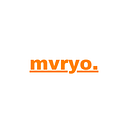In the world of software development and data interchange, using standardized formats for date and time is crucial. One of the most widely accepted standards is ISO 8601. In this guide, we will explore what ISO 8601 is, why it’s important, and how to work with it, including date and time formats, durations, and practical examples.
What is ISO 8601?
ISO 8601 is an international standard for representing dates and times. Established by the International Organization for Standardization (ISO), it aims to eliminate confusion between different date formats used worldwide. The standard defines the representation of dates, times, and durations in a clear and consistent way.
Why Use ISO 8601?
- Clarity: ISO 8601 provides a clear and unambiguous format, making it easier to understand dates and times across different systems and cultures.
- Sorting: The format allows for natural sorting of dates as they are represented in descending order from year to month to day.
- Interoperability: Many programming languages and systems support ISO 8601, making it easier to exchange date and time information.
ISO 8601 Date and Time Formats
ISO 8601 specifies several formats for representing dates and times. Here are some of the most common:
Date Format
The basic date format is YYYY-MM-DD, where:
- YYYY is the four-digit year
- MM is the two-digit month (01 to 12)
- DD is the two-digit day of the month (01 to 31)
Example:
- 2024–10–15 represents October 15, 2024.
Time Format
The basic time format is hh:mm:ss, where:
- hh is the two-digit hour (00 to 23)
- mm is the two-digit minute (00 to 59)
- ss is the two-digit second (00 to 59)
Example:
- 14:30:00 represents 2:30 PM.
Date and Time Combined
To represent both date and time, you can combine them using a T separator:
- Example:
2024-10-15T14:30:00represents October 15, 2024, at 2:30 PM.
Time Zone Designators
ISO 8601 also allows for the representation of time zones. You can use:
- Z for UTC (Coordinated Universal Time)
- An offset from UTC, you can specify the offset from UTC using
±hh:mmsuch as+08:00for 8 hours ahead of UTC.
Example:
- 2024–10–15T14:30:00Z represents 2:30 PM UTC on October 15, 2024.
- 2024–10–15T14:30:00+08:00 represents 2:30 PM in a time zone that is 8 hours ahead of UTC.
ISO 8601 Duration
ISO 8601 also defines a way to represent durations, which is useful for specifying time intervals. The duration format starts with a P (for “period”) followed by time designators.
Basic Duration Format
- P[n]Y[n]M[n]DT[n]H[n]M[n]S
- Y represents years
- M represents months
- D represents days
- T separates the date and time parts
- H represents hours
- M represents minutes
- S represents seconds
Examples:
- P1Y represents a duration of 1 year.
- P2M represents a duration of 2 months.
- P3DT4H represents a duration of 3 days and 4 hours.
- PT30M represents a duration of 30 minutes.
Usage in Programming
Many programming languages, including Kotlin, provide built-in support for ISO 8601 date and time formats, making it easy to work with date and time data. Below, we will explore how to parse, format, and manipulate ISO 8601 dates and durations in Kotlin, which you can test using the Kotlin Playground.
Working with Dates and Times
You can use the java.time package in Kotlin, which includes classes such as LocalDateTime, OffsetDateTime, and ZonedDateTime to handle ISO 8601 formats.
Example: Parsing and Formatting Dates
Here’s how to parse an ISO 8601 date string and format it back into a string:
import java.time.OffsetDateTime
import java.time.format.DateTimeFormatter
fun main() {
// Parsing an ISO 8601 date string
val isoDate = "2024-10-15T14:30:00+08:00"
val parsedDate = OffsetDateTime.parse(isoDate, DateTimeFormatter.ISO_OFFSET_DATE_TIME)
println("Parsed Date: $parsedDate")
// Formatting the parsed date back to ISO 8601 format
val formattedDate = parsedDate.format(DateTimeFormatter.ISO_OFFSET_DATE_TIME)
println("Formatted Date: $formattedDate")
}Example: Working with Different Time Zones
You can also convert between different time zones using ZonedDateTime:
import java.time.ZonedDateTime
import java.time.format.DateTimeFormatter
import java.time.ZoneId
fun main() {
// Parsing an ISO 8601 date string
val isoDate = "2024-10-15T14:30:00Z" // UTC time
val parsedZonedDate = ZonedDateTime.parse(isoDate)
println("Parsed Date in UTC: $parsedZonedDate")
// Converting to a different time zone (e.g., Asia/Tokyo)
val tokyoZoneId = ZoneId.of("Asia/Tokyo")
val tokyoDate = parsedZonedDate.withZoneSameInstant(tokyoZoneId)
println("Converted Date in Tokyo: $tokyoDate")
}Working with Durations
Kotlin also provides a straightforward way to work with durations using ISO 8601 format. You can represent durations as Duration objects and perform calculations easily.
Example: Parsing and Using ISO 8601 Durations
Here’s how to parse an ISO 8601 duration and manipulate it:
import java.time.Duration
import java.time.ZonedDateTime
fun main() {
// ISO 8601 duration string
val isoDuration = "P2DT3H4M" // Represents 2 days, 3 hours, and 4 minutes
val duration = Duration.parse(isoDuration)
println("Parsed Duration: $duration")
// Adding the duration to a specific date and time
val isoDate = "2024-10-15T14:30:00Z"
val parsedDate = ZonedDateTime.parse(isoDate)
val newDate = parsedDate.plus(duration)
println("New Date after Adding Duration: $newDate")
}Practical Considerations
When working with ISO 8601 in your applications, consider the following:
- Consistency: Always use the ISO 8601 format when storing or exchanging dates and times to avoid confusion.
- Time Zones: Be mindful of time zones when handling date and time data, especially in global applications.
- Durations: Use ISO 8601 durations when you need to specify time intervals in a clear and standard way.
Conclusion
ISO 8601 provides a reliable and standardized way to represent dates, times, and durations. By adopting this format, you can improve the clarity and interoperability of your applications. Whether you are dealing with simple date formats or more complex durations, understanding ISO 8601 is essential for effective software development.
Feel free to explore ISO 8601 further and apply it to your coding practices!
